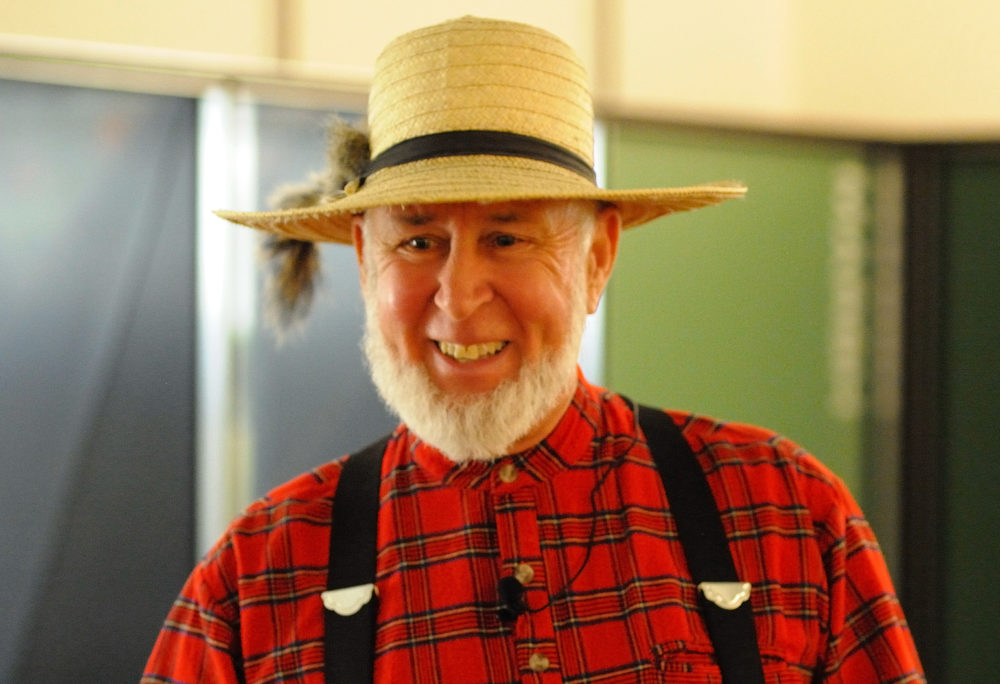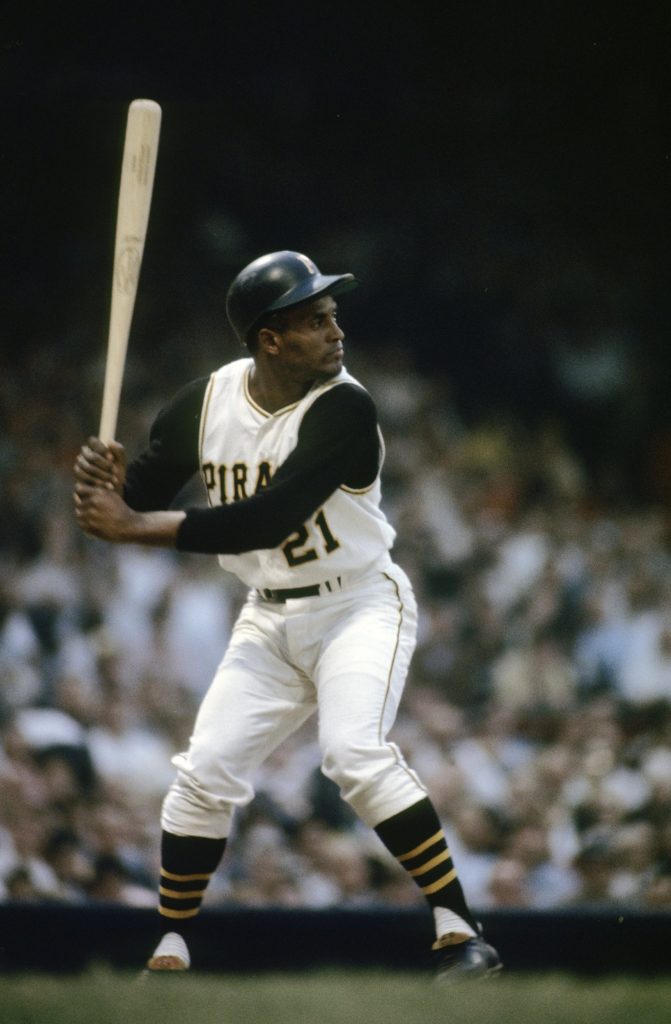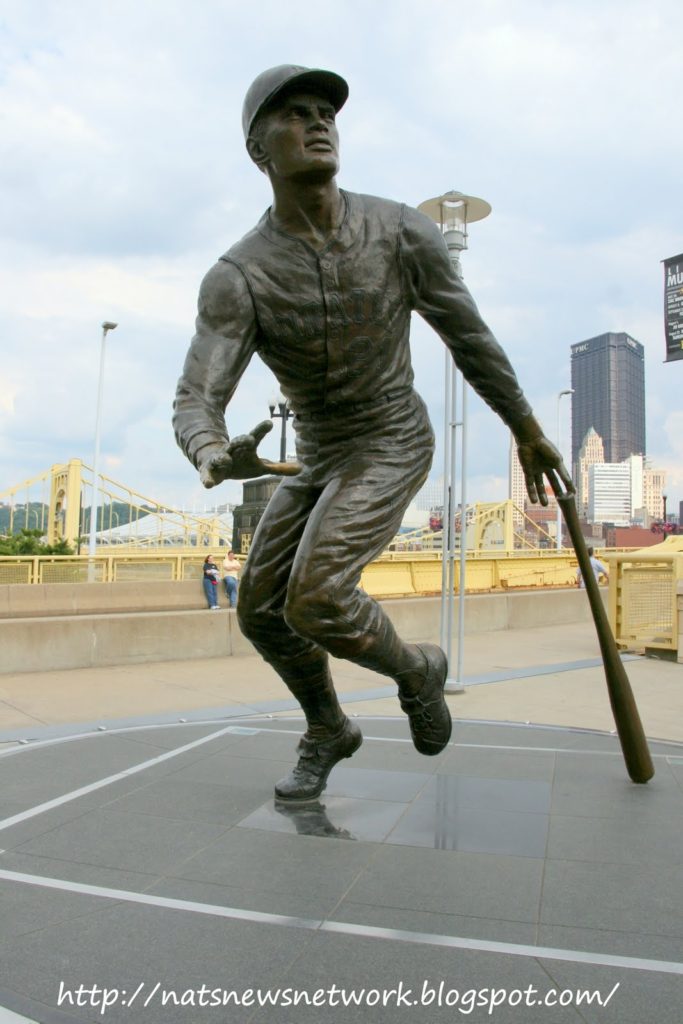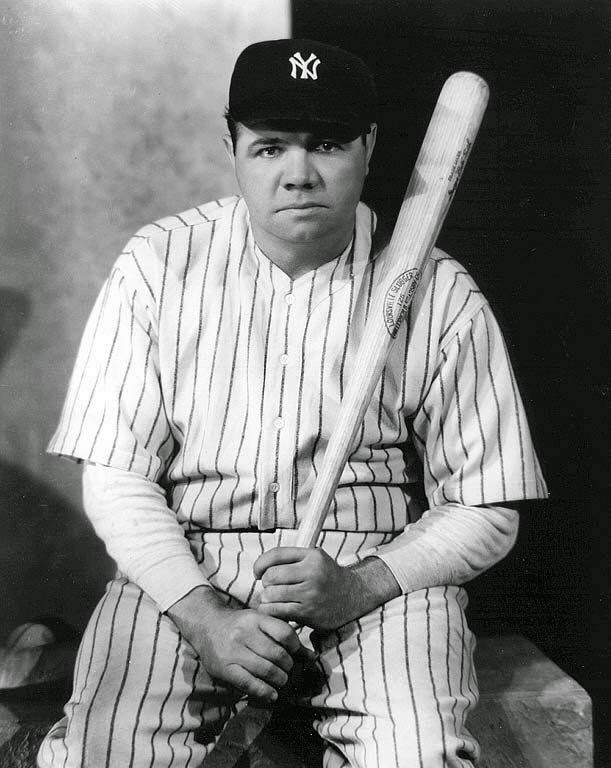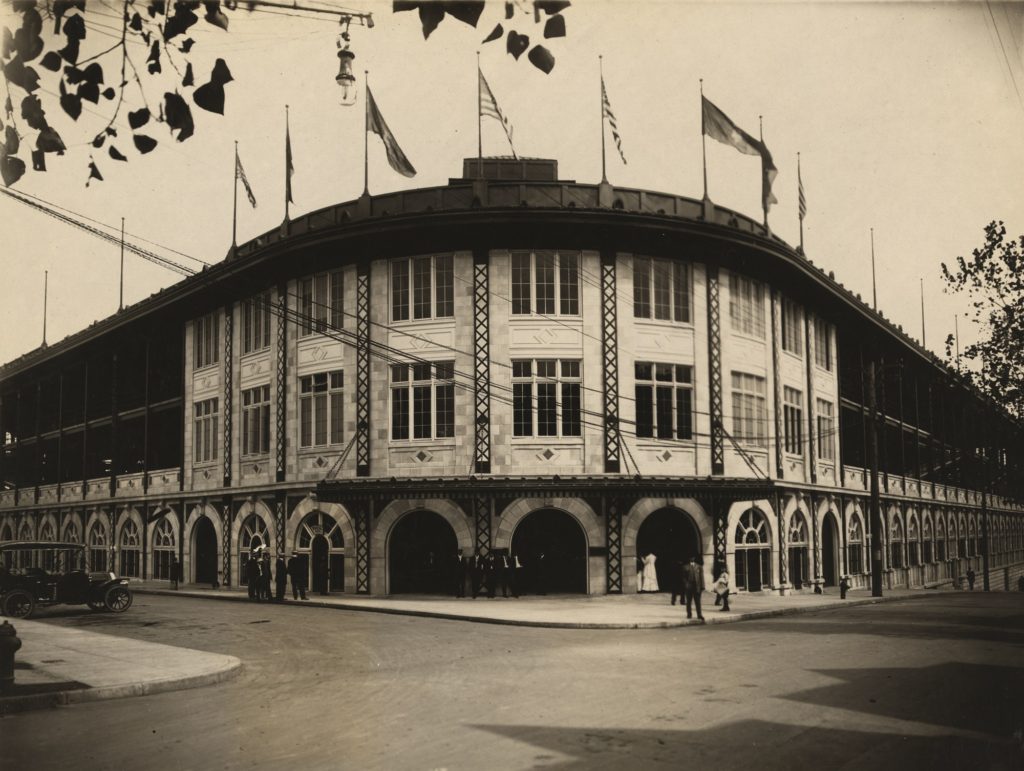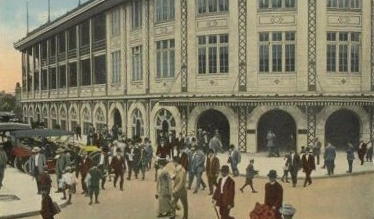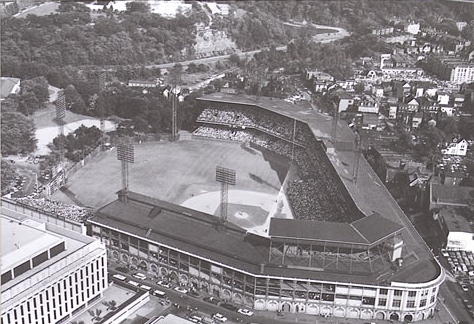
Today the Pittsburgh Pirates baseball team plays its games in a no-longer new stadium on the “Norside” of town, across the Allegheny River from “Dahntawn” – PNC Park. From the middle of the 1970 season until 2002, the Pirates played their home games in Three Rivers Stadium. This venue was shared with the football Steelers, in the huge bowl-shaped arena that became the vogue in the 1970s. But the ball park I remember best, and the one that will always loom largest in my memory was FORBES FIELD. It too was new once, way back in 1909. Located way out in the Oakland section of town, it sat along Stennett Street, not too far from Forbes Avenue and the University of Pittsburgh’s skyscraper Cathedral of Learning.
Forbes Field, named for British General John Forbes, or at least for the Avenue that in turn took its name from the General, was typical of the ball parks of its era. Just as the later Three Rivers Stadium was much like Veterans Stadium in Philadelphia, Riverfront Stadium in Cincinnati, and a host of other baseball-football arenas, Forbes Field was similar in design to Tiger Stadium in Detroit, Shibe Park (later renamed Connie Mack Stadium in Philadelphia), and Crosley Field in Cincinnati to name but a few. It wasn’t symmetrical. Originally the double-deck stands for seating ball fans extended out the first and third base lines. As the team owners prospered, the stands along the first base line were extended to the outfield, eventually reaching behind the right-center field fence. There were open “bleachers” along the left field line, so named because they were not covered over, and fans would bake in the summer sun. There were no seats behind the ivy covered brick walls in left and center field. A huge scoreboard stretched from the left field foul post towards center field. Nothing electronic in those days. Balls, strikes, outs, runs, hits, errors – all were shown by numbered signs that “the guy who worked in the scoreboard” hung on hooks to be seen by fans. Not only the current Pirate game was reported on the scoreboard. Scores of all the other games being played that day were reported as well. There were always a few openings in the board, so the guy (or guys?) who worked in there could watch the game. How else would they know what numbers to hang up? Another person who worked inside the scoreboard was the organist, who constantly played rally-rousing music. If a batted ball hit the scoreboard and fell back on the field it was still in play. If it went into the scoreboard it was a ground-rule double.
It was 1954 when my dad took me to my first ballgame there. We would go to five or six games a year, often to a “double-header” which were pretty common on Sundays. Two games for the price of one. Today’s big player salaries don’t allow that anymore. Players would probably go on strike if they had to play two games in the same day. One of our neighbors in the north side “Barracks” was Don Neeley, who had grown up in Philadelphia. He would often go to Phillies games with Dad and me. For some of my high school years, classmate Allen Zern and I would “cut school” on Opening Day of the season to go to the game. My dear mother would dutifully write a “Please excuse Jack from school. He was very sick today,” or some such appropriate message.
In the 50’s, the leftover Pennsylvania “Blue Laws” prohibited Sunday baseball after 7:00 PM. So if the second game of the double-header ran late, it would be suspended at 7:00, and finished on some other date. With the departure of home run king Ralph Kiner to the Chicago Cubs, Pirate baseball in the early 50s didn’t have a lot to cheer about. Curt Roberts, who was the first black man to play ball for the Pirates, and twins Johnny and Eddie O’Brien were the earliest Pirates I rooted for. Fred Haney was the manager, and the Pirates always finished last. That’s just the way it was, at least for several years back then. Sluggers “Big Klu” and Frank Thomas were bright spots until they too were traded away. (Does anyone remember the day Frank Thomas came to Crafton High? 1958 maybe? Donna Dagg -CHS 61- knew him and brought him to school one day.) But the team was slowly building to the one that would surprise Pittsburgh and the baseball world in 1960, when they would get back at those dreaded New York Yankees for the four games to none shellacking they got in the 1927 World Series. See the paragraphs below.

The distance to the right field foul post was only 300 feet, one of the shorter fences in the National League. To compensate, a high wire fence was built that extended some distance out from the foul post into right field. This prevented a lot of “cheap” home runs, as the ball had to go over this fence to be a home run, not just land in the stands behind the wall. A ball that hit the fence and dropped back on the field was still in play. As if making up for the short right field line, the distance into dead away center field at Forbes was 457 feet

. The wall from the right field line met the wall from the left field line at a point there. It took a mighty blast to send a ball to the center field wall, a blast that would have been a home run in almost any other ball park, or if it had gone a bit left or right instead. The Pirates were so confident there wouldn’t be many balls hit to dead center that the Batting Cage was stored there. This cage would be wheeled into home plate before games while the teams took batting practice to prevent foul balls being hit into the stands, then it would be wheeled back out to center field. I remember one time when a fly ball landed on top of the batting cage and stuck – wish I remembered who hit it. I think that was called a “ground rule double.” I’m sure the umpires made up a rule to cover that one.
Although built and used almost exclusively as a baseball stadium, Forbes Field was often the site of other events. The football Pittsburgh Steelers often played their home games here – I remember sitting with my dad on movable stands in what was Left Field as a rectangular “football field” had been created. One of the goal posts was where home plate was located – the other was out in Center Field. Forbes Field also hosted a circus from time to time.
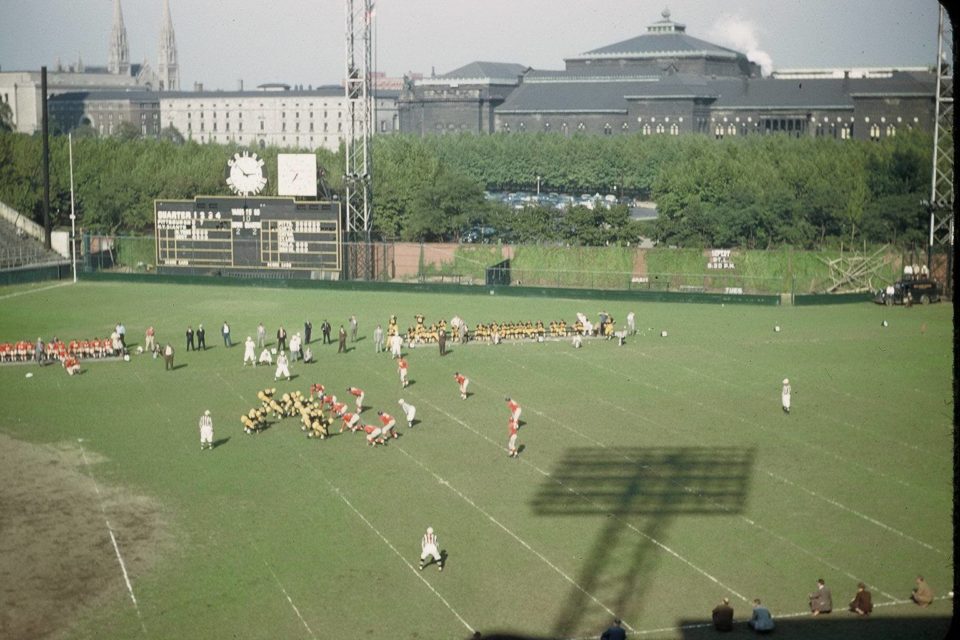
We almost always took the trolley to Forbes Field, from home to town to Oakland, but sometimes, if with Dad, parking the car downtown where parking lots were cheaper and not the hassle of finding a parking place in Oakland. It was a short walk from the “car stop” to the ticket windows along Stennett Street. I think General Admission tickets, and that’s what we always got, were $3.00 in the 50’s. We usually sat in the upper part of the lower level stands out past first base. I recall one game where we got upper level tickets, but couldn’t see much because one of the huge steel beams that supported the roof was right in front of our seats. As I got older and would go to games with a buddy, we usually got seats in the upper deck above the right field wall. You could almost see home plate from there, but you got to talk to Gus Bell and Sid Bream and other Pirate right fielders. During the 1960s of course, it was the “Great One” – ROBERTO CLEMENTE – perhaps one of the greatest Pirates ever, who you cheered on with shouts of “Ariba, Ariba,” Spanish for “Let’s Go.” Clemente reached that magic milestone of 3000 hits in his last season in 1971, and as every Pirate fan knows lost his life in early 1972 in a tragic airplane crash. A statue of Clemente was installed at one of the entrances to the old Three Rivers Stadium. It was moved to PNC Park when that venue opened in 2003. The two photos below show “No. 21” in his prime, and the statue of him at PNC Park.
Another thing I remember was the net behind home plate. A wire screen fence ran behind home plate. Fans could see through, but fouled-back baseballs couldn’t get through to hurt someone. A big net was attached to the top of this fence and was tied off to the upper deck. A foul ball that went back and landed on the net would roll up until gravity stopped it, then roll back down and drop to the field where the bat boy would scoop it up and give it back to the umpire. When this happened, everybody in the park would go, “Whoooooooooooooooooooooo! Whoooooooooooooooooooo!” as the ball rolled up the net and then back down again. Like many kids, I took my ball glove to the field, at least when I was younger, always hoping that a foul ball would come my way and I would make a memorable catch. Of course it never happened, but the hope is part of the magic of baseball.
There is always lots of excitement in a baseball game for the true fan. Sometimes its a great defensive play – a diving catch in the outfield. Sometimes its a great “pitchers’ duel” when strikeouts come fast and furious. But probably the most excitement is generated, even in a losing effort, by the HOME RUN. A batter who can knock the ball “out of the park” is usually everyone’s favorite. I remember the man who was the Pirate’s on-radio announcer when I first started to follow them in the 1950s. ROSY ROSEWELL was his name. Many of you probably associate the name BOB PRINCE as the long-time announcer for the Pirates, but Rosy preceded him. Rosy’s favorite scream when a Pirate batter hit a ball that appeared to be leaving the park was “OPEN THE WINDOW AUNT MINNIE, HERE IT COMES!” I have no idea who Aunt Minnie was. Of course in those days, not many Pirates besides Ralph Kiner ever hit very many home runs. In those later years, Prince’s signature home run cry was, “You can kiss it goodbye!”
Two of the most famous home run hitters who ever played a game at Forbes Field were BILL MAZEROSKI and BABE RUTH. Of course any Pirate fan born before 1950 probably knows where he was on that day in 1960. I was a senior in high school that fall, and even though it was a school day, the whole school was gathered around radios listening to the game. Our group was out on the small ballfield beside the high school. Needless to say it was happy bedlam when the game ended. It was the ninth inning of the seventh game of the 1960 World Series – against those dreaded and hated New York Yankees. It had been an improbable season for the Pirates as they finally rose from the ashes of the National League basement and won the 1960 Pennant. The Yankees of course had cruised to yet another American League Pennant and another trip to the World Series. I remember a few years earlier when I first became aware that there was such a thing as a World Series. I thought it was ONLY EVER between the Yankees and the Brooklyn Dodgers! Anyway, the seventh game had gone back and forth score wise. Now it was the bottom of the ninth inning – the score was tied. Bill Mazeroski hit a home run now and then, in fact he had hit a critical one earlier in this series, but he was not known as a power hitter. But he came through in the bottom of the ninth. He hit a Ralph Terry pitch far over the left-center field wall – the first “walk-off” home run ever hit in a World Series, and the rest is history. Yankee Left Fielder Yogi Berra, no longer a catcher, just turned and watched it go. The mighty Yankees had been vanquished!

Oh yes, I mentioned Babe Ruth too. What was the Babe – George Herman Ruth – doing at Forbes Field? He had last played there in the 1927 World Series. He had hit three home runs in that series, all three at Yankee Stadium. The Babe was now at the very tail end of his career, no longer a Yankee, but now an outfielder for the Boston Braves of the National League. It was MAY 25, 1935, and the Braves were finishing up a series with the Pirates. It was almost the last game the Babe would play but he made it a good one. He went four for four that day, three of them were home runs, his 712th, 713th, and 714th, the last three of his long career. The last one, number 714, cleared the roof of the upper deck in right field, the first time anyone had ever done that. Only a few other players, including Mickey Mantle, Bob Skinner, and Willie Stargell would ever accomplish that feat again. Babe went on to play in five more games for the Braves, but never got another hit. Babe’s record of 714 home runs would stand for almost 40 years until Hank Aaron broke it in 1974.

Today Forbes Field lives on only in the memories of thousands of Pittsburghers and other baseball fans who went to games there. But a few bits of it are still very real. A few small sections of the old outfield brick wall still stand among the new University of Pittsburgh buildings which were built in its place, one of them the part of the wall where Bill Mazeroski’s “miracle home run” left the park to beat the Yankees in the bottom of the ninth of the seventh game of that memorable 1960 World Series. What a monument ! The section of wall that was deep center field also remains. A Pitt building also covers the spot where Forbes Field’s home plate sat for those 61 seasons, but home plate is still there, proudly mounted in the floor of the building for all to still come and see. So you see, Forbes Field was baseball to me, as the stadiums that have succeeded it were, are, and will be to other fans of our still great “national game.” Updated November 2022
